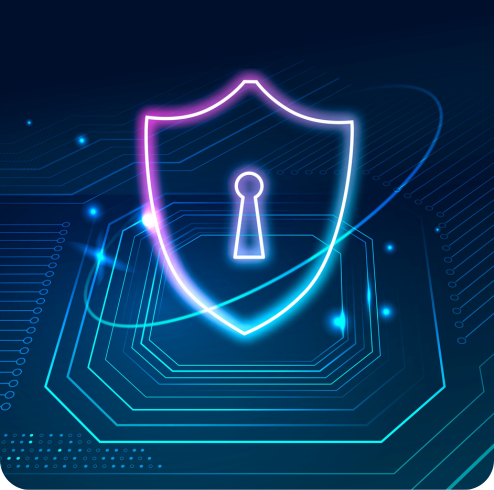As modern organizations accelerate their adoption of cloud-native infrastructure, the potential attack surface has expanded dramatically. Threat actors exploit misconfigurations, unpatched vulnerabilities, and over-permissive access to compromise cloud workloads, containers, and endpoints. In this complex environment, the ability to rapidly detect, investigate, contain, and recover from security incidents is critical.
Uptycs provides a unified platform that supports the full incident response lifecycle—offering organizations the visibility, control, and context they need to minimize damage, improve response times, and strengthen long-term resilience.
What Incident Response Looks Like with Uptycs
The Uptycs Cloud Native Application Protection Platform (CNAPP) integrates detection, analysis, and response across cloud and on-prem environments. Incident response teams can move quickly from telemetry collection to containment and post-incident analysis, all from a single console.
Uptycs enables organizations to operationalize incident response through five key areas:
Detection, Protection, and Analysis
Uptycs provides actionable telemetry and behavioral analysis to detect and respond to threats as they happen. The platform offers:
- Immediate action on telemetry as it occurs
- Monitor and protect instantly against malicious activity like reverse shells, coin miners, ransomware
- Process memory and file scanning using YARA rules to detect malicious toolkits
- Malicious behavioral detection using more than 2500 detection rules
- Anomalous activity detection
- Continuous file integrity monitoring
- Real-time inventory of infrastructure and software assets
- A catalog of software and licensing information
When an attack occurs, Uptycs presents a detailed visualization of what happened, including the configuration weaknesses and vulnerabilities that enabled the attacker to gain access. The evidence graph reconstructs the sequence of events, from initial exploitation (e.g., public internet exposure) to lateral movement using stolen credentials, leveraging command-line tools like the AWS CLI, and ultimately stealing sensitive data from an object store or a database.
Using telemetry from cloud APIs and optional VM sensors, Uptycs identifies malicious commands, role assumptions, lateral movement, and network activity. It correlates these signals with the MITRE ATT&CK framework, scoring them to assess severity. An integrated AI summarizer then produces an analyst-friendly incident overview, highlighting tactics, techniques, and recommended remediation steps.
Post-Incident Forensics
Once a threat has been identified and contained, organizations need to perform a post incident analysis to understand the root cause and exposure. Uptycs provides robust forensic investigation tools designed for modern, distributed hybrid cloud environments.
Key forensic capabilities include:
- Running live commands or scripts across infrastructure directly from the SaaS console
- Threat hunting across endpoints, Kubernetes nodes, and cloud resources
- Historical telemetry lookback with full activity retention for days, weeks, or months
- File and process memory carving for forensic review
- Scanning of full disks for malicious or unauthorized files
- Detection of unmanaged or rogue assets
These capabilities enable rapid and accurate root cause analysis. Investigators can search by any known indicator—such as a username, process name, or IP address—and quickly trace the full sequence of events. By correlating activity across layers, Uptycs helps identify how the attack started, how far it spread, and what assets were affected.
In cloud environments, analysts can reconstruct API call sequences to identify potential data exfiltration, unauthorized access, or privilege escalation. Forensic data can also support compliance reporting and legal investigations.
Containment
Effective containment is essential to stop an attack in progress and reduce impact. Uptycs enables security teams to take immediate action on compromised systems using a range of response tools:
- Kill or block known malicious processes
- Quarantine infected hosts to isolate them from the network
- Disable compromised users or service accounts
- Reboot or shut down affected systems
- Delete or isolate malicious files
Recovery
After a threat has been contained, organizations must restore operations and close security gaps that enabled the compromise. Uptycs simplifies this phase by supporting:
- Execution of remediation actions across individual or multiple hosts
- Patching of vulnerable systems
- Configuration updates to eliminate exploitable weaknesses
By offering system-wide visibility and orchestration capabilities, Uptycs allows teams to recover efficiently and with minimal disruption. Lessons learned from each incident are used to improve detection rules, refine policies, and enhance infrastructure resilience.
Hygiene and Prevention
Strong cybersecurity hygiene helps reduce the likelihood of future incidents. Uptycs supports proactive security management by enabling:
- Continuous checks against compliance frameworks and security benchmarks
- Detection and management of vulnerabilities across workloads
- Automated identification of misconfigurations
- Visualization of security posture across environments
Security hygiene is about minimizing the attack surface through consistent visibility and control. By applying preventative best practices, organizations enhance their overall incident response capability and reduce mean time to detection (MTTD) and mean time to remediation (MTTR).
Why Uptycs
Uptycs consolidates fragmented security tools into a single platform that unifies telemetry, policy enforcement, and response actions across cloud, containers, and endpoints. This unified approach enables:
- Faster, more accurate incident detection and investigation
- Centralized execution of containment and remediation actions
- Consistent policy enforcement across diverse environments
- Scalable automation and simplified operations
Organizations using Uptycs gain complete visibility into their modern attack surface and the ability to respond decisively—without stitching together multiple tools or teams.
Get Started with Modern Incident Response
A strong incident response strategy doesn’t start after a breach—it’s built into your cloud-native infrastructure from day one. Uptycs enables proactive security monitoring, real-time response, and comprehensive incident analysis in one unified platform.
Ready to strengthen your incident response program and reduce risk across your cloud, containers, and endpoints?







